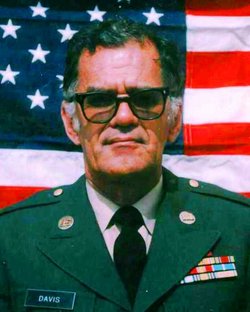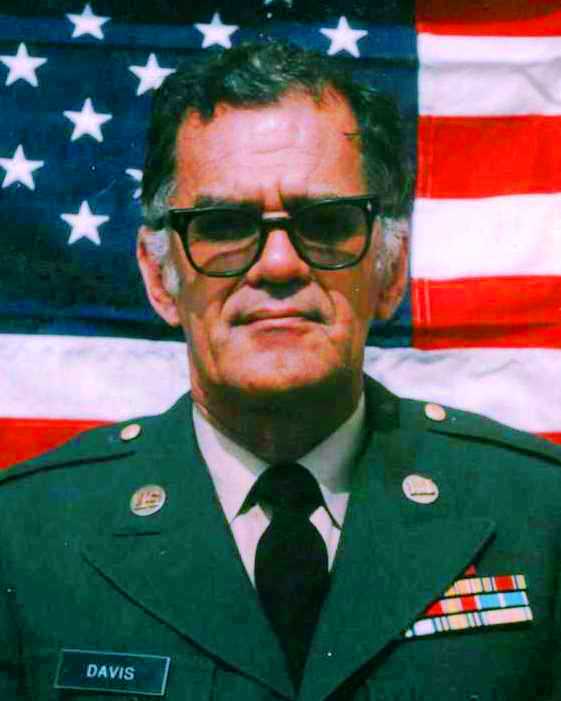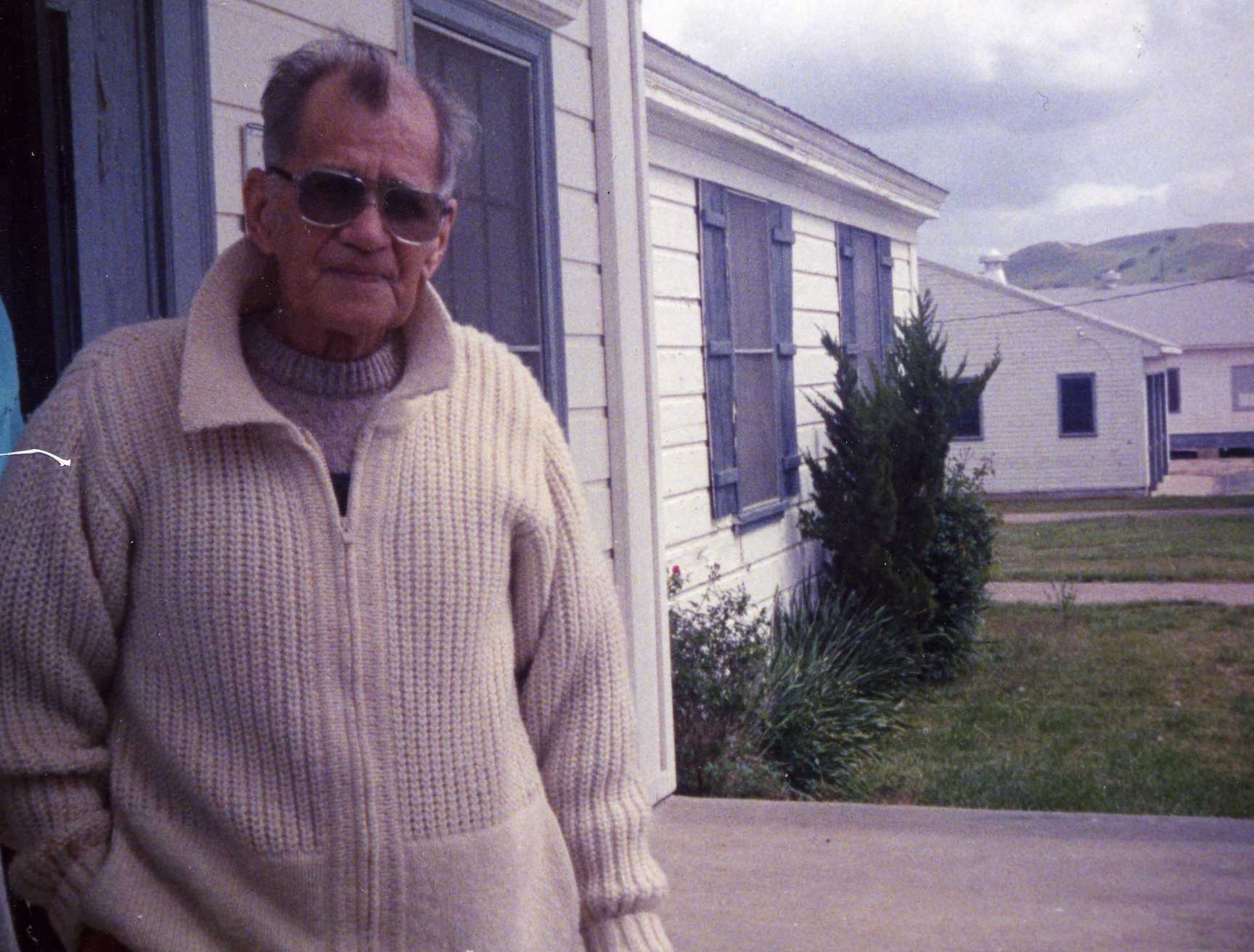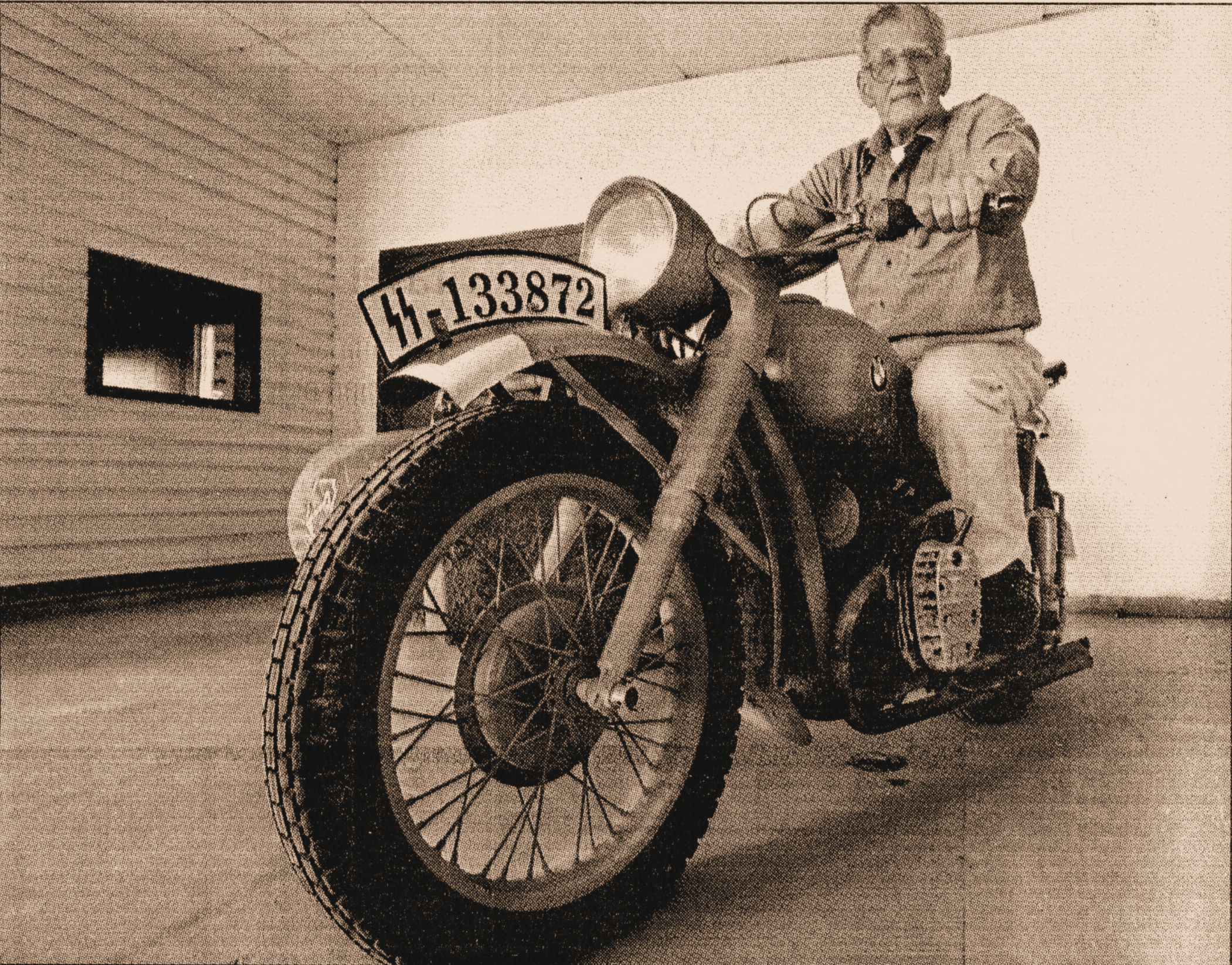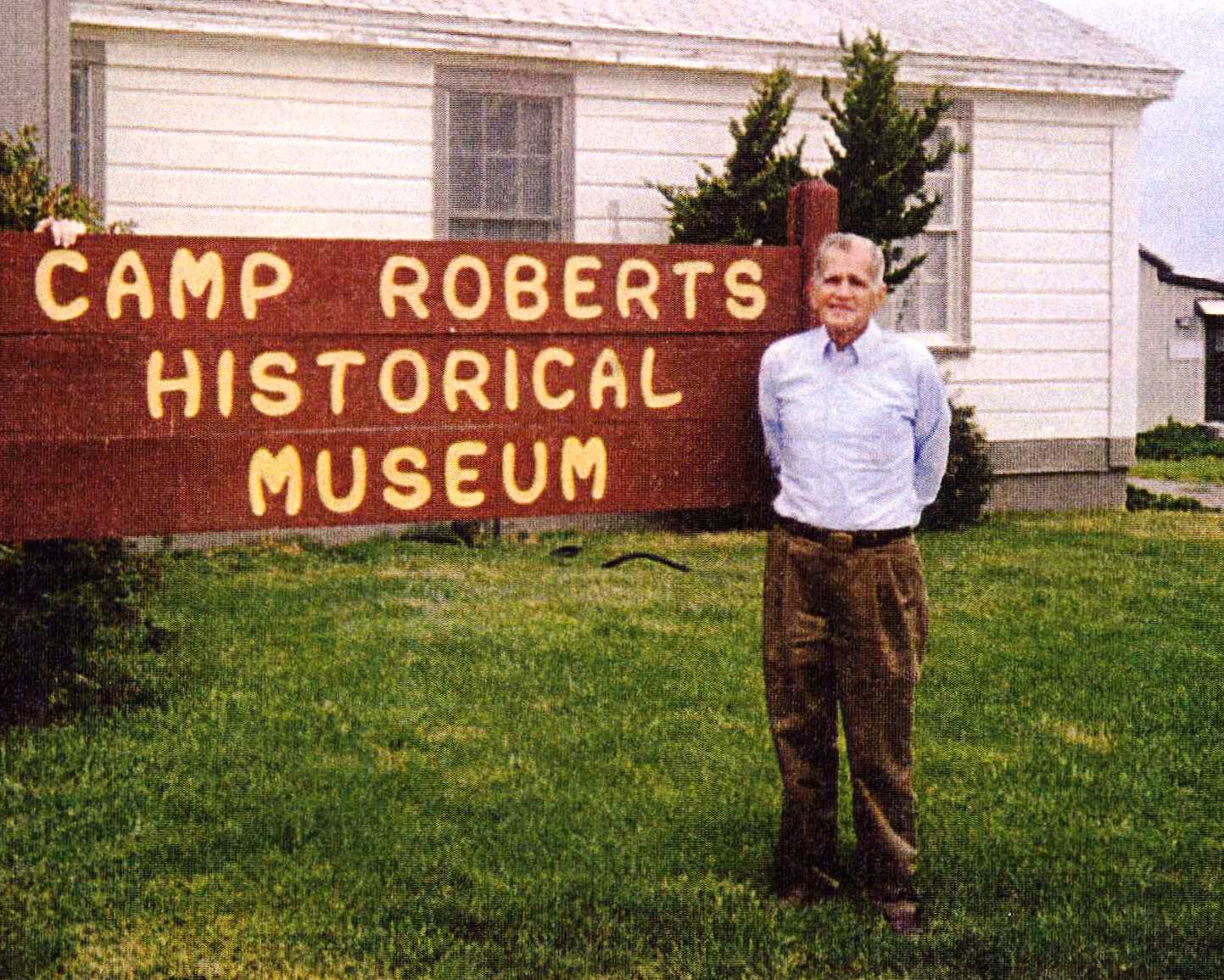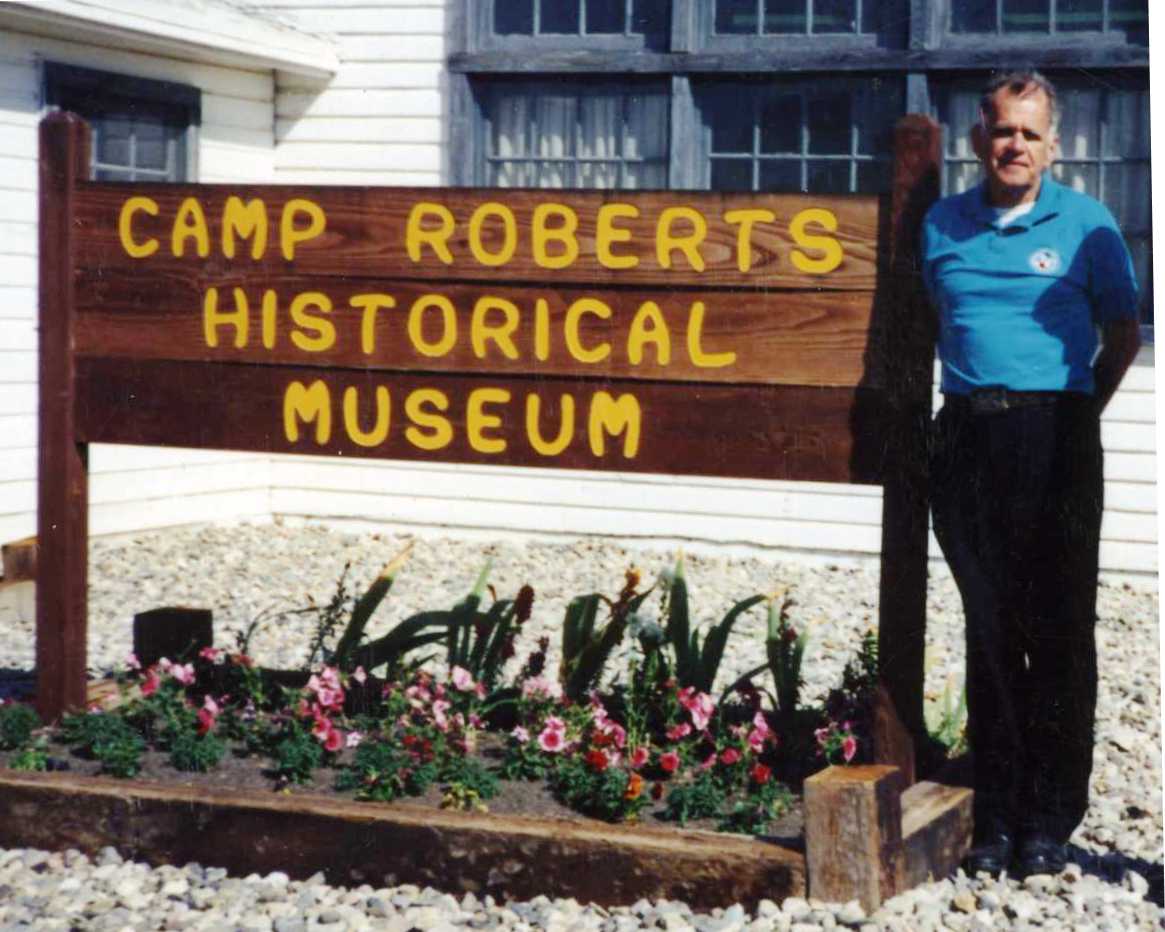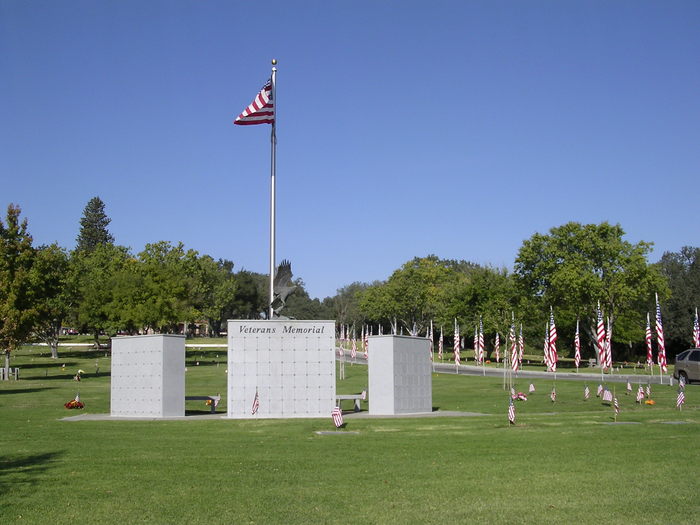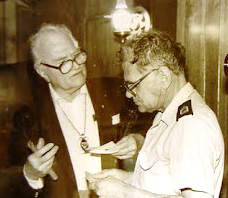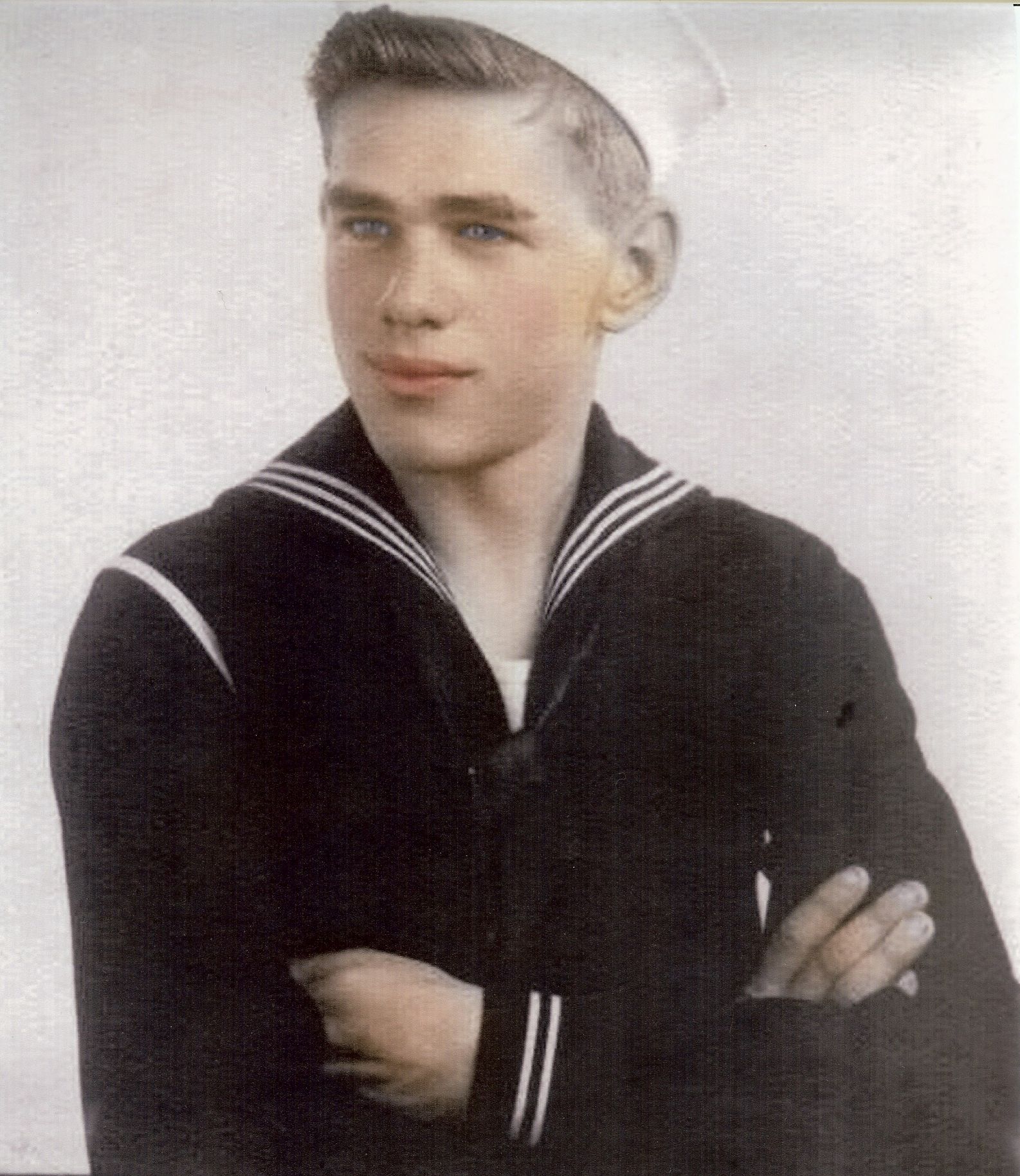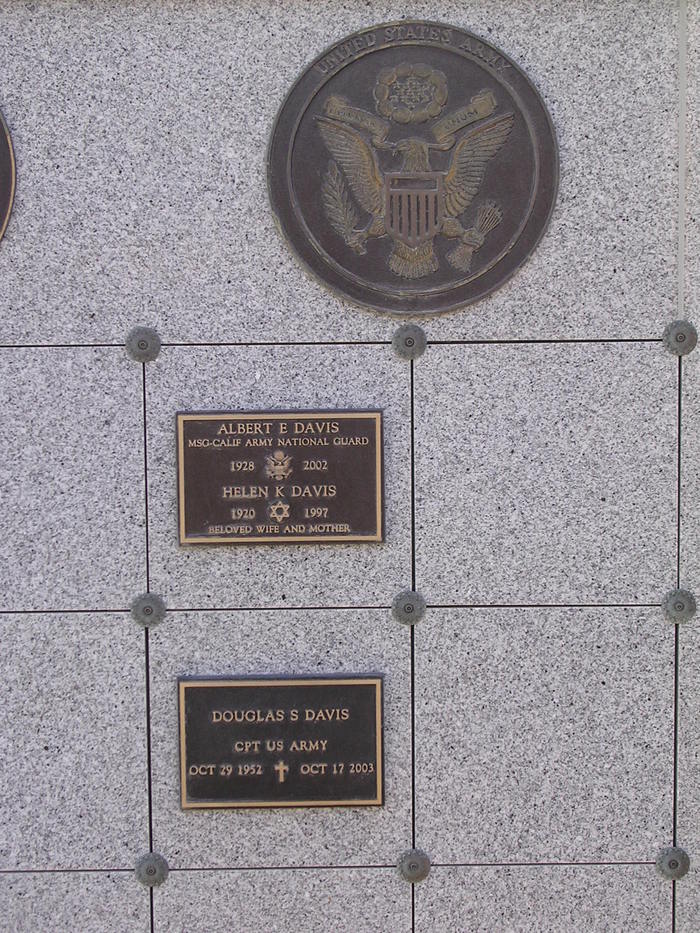Here is his life in his own words:
"I was born the 5th day of January, 1928 in Eureka, California, the first child of Edward Manley Davis and Mildred Ruth (Bryant) Davis. They were both from pioneer families of Humboldt County and Eureka, as both families had arrived there in 1864. My father was working for the old Humboldt Times--a morning newspaper in Eureka--as a linotype operator. When I was a little older, he wanted to become a baker, so he started as an apprentice at the Log Cabin Bakery in Eureka. Just as he became a journeyman baker, the Great Depression hit Eureka, causing many lost jobs in the area, his being one of them. He was only out of work for two weeks when he was offered a job running a bakery in the community of Wildwood. Wildwood (now known as Rio Dell) is about twenty-two miles south of Eureka.
To regress slightly, while he was still at the Log Cabin Bakery a little girl arrived at our door and we took her in. This was on September 29, 1930. My parents named her Margie Joann. Before Margie arrived on the scene, I guess I was lonely, for I had two friends that I had created and named "Da-Da" and "Cluck-Cluck." I apparently had a lot of fun with these two beings, but when Margie arrived I opened the front door and said "Bye Da-Da, Bye Cluck-Cluck," and never saw or mentioned them again, as I now had a real pal.
One story my mother told me was that I would wander off down the street to visit the neighbors, so she took me out into the back yard one day and tied me up to a tree by my belt loops. She noticed that it was quiet in the yard, and on checking, all she could find was a pair of pants and a rope. Looking around the neighborhood she found me clad in only my underpants.
There was an older boy down the street who taught me to swear, and when one of our neighbors walked by our house I called out to her, "Hello, Mrs. Son of a Bitch." She told my Dad, and he washed out my mouth with hot peppers. It was years before I did that again.
It was sometime in 1932 when we moved to Wildwood, into a large house on a hill known as the Anderson House. We stayed there for a short time, then moved to five other houses in the six years that we lived in Wildwood. One was what we called "the field house." It was about a quarter-mile east of the highway, and next door to a lady who wasn't quite all there. She believed that all her sons were dead, and she would cover her windows with old newspapers when anyone went by her house. It was here that I was fascinated by a female farmer who was mowing hay with a horse-drawn mower, and I walked in front of the mower, keeping up with the horses. The person didn't want to stop suddenly, and my Dad, who was watching all this, didn't want to yell at me, as I would stop. So he walked up to me, picked me up, and walked away from the path of the mower. Another time, Margie and I were walking down the road to the house and I somehow fell into an abandoned well. I floundered there for a short time, and my sister somehow pulled me out.
In 1939, we moved back to Eureka, and lived at 2114 E Street, in a house my Great-Grandfather Young built about 1898. The house sits on a hill surrounded by other Victorians, as the neighborhood was quite well-to-do in its day. On the corner of the block north was the home of the Evans family, who were very wealthy lumber people. I started the fourth grade at Washington School at 1910 California Street, and had to walk about eight blocks to get there. Good times were had at Washington School, and then I went to the junior high school on J Street.
When I was 14 and in junior high school, I had to have my appendix removed. When I returned to school I was in trouble with the coach. He had it in for my Dad for a number of years, and he took it out on me by hitting me in the stomach as hard as he could. He resented me and my friends, and wouldn't let any of us play school sports. So we formed a basketball team among ourselves, and one time we challenged the school team and beat them. With this, the coach banned us from playing anything, and this carried over into high school. Going through high school was very boring for me, except a few humorous things that went on.
In the 12th grade, I quit school and joined the Navy a couple of days after my 17th birthday. I was sent to San Diego for boot camp. While in boot camp, we were on the drill field and a plane was doing diving maneuvers when the plane just fell apart and fell into San Diego Bay. The pilot got out, for we saw a parachute float to earth. I was told later that this was a new jet aircraft, and it was being tested. After boot camp, I was put on a "draft" for an aircraft carrier in Alameda, but I got the mumps at the same time that I was to be assigned to the carrier. I was put into Naval Hospital in San Diego, and missed the ship. I felt bad about this at the time, as I wanted to do my part in the war, but I was grateful years later, as I found that all the carriers had gone to Okinawa and were damaged by Japanese planes. After I got out of the hospital, I went to Port Hueneme (by Ventura) and went through cargo handling school where I learned how to rig booms, run winches, and store cargo.
I was then sent to Treasure Island, awaiting transfer to a Troop Transport--the Admiral W. S. Sims (AP-127)--which was being built. We had to go to the ship each day by bus and help get the ship ready for its shakedown cruise. I was in San Francisco one day, and heard that the war had ended. The next day, San Francisco went wild. We were restricted to the ship for a few days until all the fun was over.
The ship was commissioned in the middle of September 1945, and after a few shakedown cruises we were ready to do our thing for the government. We were assigned to what was called "The Golden Fleet," as we would go over to the war fronts empty, and pick up veterans. I spent my first Christmas in the Navy (1945) tied up to a pier in Manila harbor. There were still a lot of sunken ships in the harbor--mostly Japanese. We got to go ashore and I was shocked to see all the damage from bombings and shelling. This was not to be our only trip to the Philippines, and we also made three trips to Okinawa.
The last trip I made on the Sims was in July of 1946, when we took 800 troops to Korea, which was again quite an experience. Coming back to San Francisco, the ship was turned over to the Army Transportation Corps. While on the Sims I became a Ships Baker, and did that throughout the rest of my Navy career. To regress again, I had wanted to be a baker like my Dad, but he told me "If I catch you in a bake shop I'll kick your butt between your shoulder blades!" When I had enlisted in the Navy, I asked if I could be a baker and they also said no. When I was assigned to the Sims I was put into the galley (kitchen). I became friends with one of the bakers and asked him if there was ever an opening could I have it. A couple of months later I was a baker. My Dad felt that as long as the Navy did this it was okay, and he gave me some great hints.
I was then transferred to the Receiving Station at Pearl Harbor, in the station bakery. There were two crews, and we rotated every other day, but with the hours they gave us we had to work every day for about ten hours, which meant no less than 70 hours per week. I didn't like this, so I started to put in for a transfer once a week. I guess they got tired of it, as I was sent back to the States and home on leave. When the leave was up, I checked in at Camp Shoemaker near Oakland, California, and was again transferred to Pearl Harbor. I asked why I was going back there, and was told, "Because you are, that's why!" They sent me to John Rogers Airport, a small portion of what is now the International Airport in Honolulu. After spending some time there, I was sent home in December of 1947, as my hitch in the Navy was up in March. I then joined the Navy Reserve to keep up my "points' so that I could retire some day from the Navy.
My Dad got me a job as an apprentice plumber, and I worked at that job for about a year when the boss saw that I was good with drawings and figures and could read blueprints well. He told me that I'd better sign up at Humboldt State as an architectural student or my butt would be kicked. Of course I did it. The summer of 1950, I was working in a freezing plant when the Korean War started. I was called back into the Navy, since I had been foolish enough to join the Navy Reserve when I got out the last time.
This time, I went to Treasure Island, then was assigned to the USS Neches (AG-47), a tanker ship that carried jet fuel and aviation gasoline. I arrived sometime in the early part of December, and a few of us assigned to the ship were sent to San Diego and were the crew that towed it to the Todd Shipyard in San Francisco. When we were coming into the Bay, we hit the hospital ship USS Benevolence, which had been hit by a Luckinbeck ship and sunk in the Bay channel. We put a large hole in our bow and had to go to dry dock.
In January, 1951, the Neches was re-commissioned, and after the repairs we went to San Pedro, down the coast by Los Angeles, and filled up with aviation gas. The night before we sailed, I went out and had a few too many, and with the smell of the high sulfur of the ship's fuel, making lemon pies, and the hangover, I got sick. With this, plus seven storms, I was sick all the way to Japan. On the way back from Japan, we stopped in at Okinawa. It had been four years since I was there last, and there had been many improvements.
The ship did duty all around the West and East Coasts, and I saw a lot of ports in the States. The ship then was assigned to the Sixth Fleet in the Mediterranean, where our home port was Naples, Italy. We stayed in the Med for a long time and I got to see Italy, France, Turkey, Sicily, Malta, Sardinia and Crete. While we were there, and on maneuvers, a French plane crashed in the sea and we helped pick up bodies from the wreckage.
We came back from the Mediterranean, landed in New York, then on to San Francisco, where I got out of the Navy and went back to Eureka. I wanted to finish school, so I started studying engineering at Heald College in San Francisco [Heald alumni included A. P. Giannini, founder of Bank of America, and "Trader Vic" Bergeron]. I needed a place to stay and found a place--The Harcourt-- on Sutter and Larkin Streets. It was a guest house, and I worked there for my room and board. My first duty was waiting on tables in the dining room, where I met a girl named Helen King. I waited on her my first morning on the job, and I asked her what she wanted. She said, "And what language do you speak?" I soon got a better job working the front desk, and this gave me more time to study and play around. Finally, Helen and I got married, so I quit school and looked for a better job.
I started work at the Southern Pacific Railroad Company in the engineering department, helping to design some of the things that railroads need. One of the things was the "piggy-back" system that the railroad companies still use. Disillusioned at this job (I like to say that the year I was there was the longest three years of my life), I applied and got a job as a draftsman at the Presidio of San Francisco. I was later promoted to Engineer Technician, and this "temporary job" ended up lasting six years. While there, I was put into the Master Planning Section. where we planned buildings and housing tracts for the Post. I also got interested in history there and did some research for things at the Presidio. I became a part-time "official-unofficial historian" for the Post. In my spare time I wrote about the fortifications of San Francisco Bay, the history of Fort Point (Fort Scot), and I started a history of Angel Island plus other historical ventures.
In 1961, I received a call from a place called Camp Roberts. They were looking for an Engineer Technician, and I applied for the job. I started work on August 26 of that year. I stayed at the Camp, working for the Engineers, for 29 years and retired from the job in April of 1992. The Camp closed in March of 1970, and reopened in April of 1971 under the California Army National Guard. I asked if I was still eligible to be in the Reserve program and was told that I was one year to old, but I obtained a waiver for that year. I joined the National Guard as a Corporal (E-5) and retired in January 1990 as a Master Sergeant (E-8).
My wife Helen and I had four beautiful children: Douglas, Carolyn, Frederick and Andrew, who in turn gave us five grandchildren.
I was very ill in 1993, and almost died two times during that period. While in the hospital, Helen found that all the years of smoking finally caught up with her and was diagnosed with lung cancer. She had a portion of one lung removed, but the cancer returned in 1996, and she died on February 26, 1997."
After retirement, he continued to run the Camp Roberts Historical Museum, which he had founded in the early 1980s, serving as Curator for 16 years--a knowledgeable figure on military history and well-respected in his community. His book on Camp Roberts' history, "Guns Across the Salinas," is sold in the museum gift shop, and excerpts are posted on the web site of the California State Military Museum. He coordinated the Memorial Day Services at the Paso Robles District Cemetery (where he is now buried) for 30 years. He is interred with his wife Helen who preceded him in death and next to his son Douglas, a Captain in the US Army who passed away in 2003. He was a member of several local organizations and civic clubs. His legacy resides in the Camp Roberts Historical Museum, where its military library is named in honor of him and has his uniform and other items on permanent display in honor of his work.
Here is his life in his own words:
"I was born the 5th day of January, 1928 in Eureka, California, the first child of Edward Manley Davis and Mildred Ruth (Bryant) Davis. They were both from pioneer families of Humboldt County and Eureka, as both families had arrived there in 1864. My father was working for the old Humboldt Times--a morning newspaper in Eureka--as a linotype operator. When I was a little older, he wanted to become a baker, so he started as an apprentice at the Log Cabin Bakery in Eureka. Just as he became a journeyman baker, the Great Depression hit Eureka, causing many lost jobs in the area, his being one of them. He was only out of work for two weeks when he was offered a job running a bakery in the community of Wildwood. Wildwood (now known as Rio Dell) is about twenty-two miles south of Eureka.
To regress slightly, while he was still at the Log Cabin Bakery a little girl arrived at our door and we took her in. This was on September 29, 1930. My parents named her Margie Joann. Before Margie arrived on the scene, I guess I was lonely, for I had two friends that I had created and named "Da-Da" and "Cluck-Cluck." I apparently had a lot of fun with these two beings, but when Margie arrived I opened the front door and said "Bye Da-Da, Bye Cluck-Cluck," and never saw or mentioned them again, as I now had a real pal.
One story my mother told me was that I would wander off down the street to visit the neighbors, so she took me out into the back yard one day and tied me up to a tree by my belt loops. She noticed that it was quiet in the yard, and on checking, all she could find was a pair of pants and a rope. Looking around the neighborhood she found me clad in only my underpants.
There was an older boy down the street who taught me to swear, and when one of our neighbors walked by our house I called out to her, "Hello, Mrs. Son of a Bitch." She told my Dad, and he washed out my mouth with hot peppers. It was years before I did that again.
It was sometime in 1932 when we moved to Wildwood, into a large house on a hill known as the Anderson House. We stayed there for a short time, then moved to five other houses in the six years that we lived in Wildwood. One was what we called "the field house." It was about a quarter-mile east of the highway, and next door to a lady who wasn't quite all there. She believed that all her sons were dead, and she would cover her windows with old newspapers when anyone went by her house. It was here that I was fascinated by a female farmer who was mowing hay with a horse-drawn mower, and I walked in front of the mower, keeping up with the horses. The person didn't want to stop suddenly, and my Dad, who was watching all this, didn't want to yell at me, as I would stop. So he walked up to me, picked me up, and walked away from the path of the mower. Another time, Margie and I were walking down the road to the house and I somehow fell into an abandoned well. I floundered there for a short time, and my sister somehow pulled me out.
In 1939, we moved back to Eureka, and lived at 2114 E Street, in a house my Great-Grandfather Young built about 1898. The house sits on a hill surrounded by other Victorians, as the neighborhood was quite well-to-do in its day. On the corner of the block north was the home of the Evans family, who were very wealthy lumber people. I started the fourth grade at Washington School at 1910 California Street, and had to walk about eight blocks to get there. Good times were had at Washington School, and then I went to the junior high school on J Street.
When I was 14 and in junior high school, I had to have my appendix removed. When I returned to school I was in trouble with the coach. He had it in for my Dad for a number of years, and he took it out on me by hitting me in the stomach as hard as he could. He resented me and my friends, and wouldn't let any of us play school sports. So we formed a basketball team among ourselves, and one time we challenged the school team and beat them. With this, the coach banned us from playing anything, and this carried over into high school. Going through high school was very boring for me, except a few humorous things that went on.
In the 12th grade, I quit school and joined the Navy a couple of days after my 17th birthday. I was sent to San Diego for boot camp. While in boot camp, we were on the drill field and a plane was doing diving maneuvers when the plane just fell apart and fell into San Diego Bay. The pilot got out, for we saw a parachute float to earth. I was told later that this was a new jet aircraft, and it was being tested. After boot camp, I was put on a "draft" for an aircraft carrier in Alameda, but I got the mumps at the same time that I was to be assigned to the carrier. I was put into Naval Hospital in San Diego, and missed the ship. I felt bad about this at the time, as I wanted to do my part in the war, but I was grateful years later, as I found that all the carriers had gone to Okinawa and were damaged by Japanese planes. After I got out of the hospital, I went to Port Hueneme (by Ventura) and went through cargo handling school where I learned how to rig booms, run winches, and store cargo.
I was then sent to Treasure Island, awaiting transfer to a Troop Transport--the Admiral W. S. Sims (AP-127)--which was being built. We had to go to the ship each day by bus and help get the ship ready for its shakedown cruise. I was in San Francisco one day, and heard that the war had ended. The next day, San Francisco went wild. We were restricted to the ship for a few days until all the fun was over.
The ship was commissioned in the middle of September 1945, and after a few shakedown cruises we were ready to do our thing for the government. We were assigned to what was called "The Golden Fleet," as we would go over to the war fronts empty, and pick up veterans. I spent my first Christmas in the Navy (1945) tied up to a pier in Manila harbor. There were still a lot of sunken ships in the harbor--mostly Japanese. We got to go ashore and I was shocked to see all the damage from bombings and shelling. This was not to be our only trip to the Philippines, and we also made three trips to Okinawa.
The last trip I made on the Sims was in July of 1946, when we took 800 troops to Korea, which was again quite an experience. Coming back to San Francisco, the ship was turned over to the Army Transportation Corps. While on the Sims I became a Ships Baker, and did that throughout the rest of my Navy career. To regress again, I had wanted to be a baker like my Dad, but he told me "If I catch you in a bake shop I'll kick your butt between your shoulder blades!" When I had enlisted in the Navy, I asked if I could be a baker and they also said no. When I was assigned to the Sims I was put into the galley (kitchen). I became friends with one of the bakers and asked him if there was ever an opening could I have it. A couple of months later I was a baker. My Dad felt that as long as the Navy did this it was okay, and he gave me some great hints.
I was then transferred to the Receiving Station at Pearl Harbor, in the station bakery. There were two crews, and we rotated every other day, but with the hours they gave us we had to work every day for about ten hours, which meant no less than 70 hours per week. I didn't like this, so I started to put in for a transfer once a week. I guess they got tired of it, as I was sent back to the States and home on leave. When the leave was up, I checked in at Camp Shoemaker near Oakland, California, and was again transferred to Pearl Harbor. I asked why I was going back there, and was told, "Because you are, that's why!" They sent me to John Rogers Airport, a small portion of what is now the International Airport in Honolulu. After spending some time there, I was sent home in December of 1947, as my hitch in the Navy was up in March. I then joined the Navy Reserve to keep up my "points' so that I could retire some day from the Navy.
My Dad got me a job as an apprentice plumber, and I worked at that job for about a year when the boss saw that I was good with drawings and figures and could read blueprints well. He told me that I'd better sign up at Humboldt State as an architectural student or my butt would be kicked. Of course I did it. The summer of 1950, I was working in a freezing plant when the Korean War started. I was called back into the Navy, since I had been foolish enough to join the Navy Reserve when I got out the last time.
This time, I went to Treasure Island, then was assigned to the USS Neches (AG-47), a tanker ship that carried jet fuel and aviation gasoline. I arrived sometime in the early part of December, and a few of us assigned to the ship were sent to San Diego and were the crew that towed it to the Todd Shipyard in San Francisco. When we were coming into the Bay, we hit the hospital ship USS Benevolence, which had been hit by a Luckinbeck ship and sunk in the Bay channel. We put a large hole in our bow and had to go to dry dock.
In January, 1951, the Neches was re-commissioned, and after the repairs we went to San Pedro, down the coast by Los Angeles, and filled up with aviation gas. The night before we sailed, I went out and had a few too many, and with the smell of the high sulfur of the ship's fuel, making lemon pies, and the hangover, I got sick. With this, plus seven storms, I was sick all the way to Japan. On the way back from Japan, we stopped in at Okinawa. It had been four years since I was there last, and there had been many improvements.
The ship did duty all around the West and East Coasts, and I saw a lot of ports in the States. The ship then was assigned to the Sixth Fleet in the Mediterranean, where our home port was Naples, Italy. We stayed in the Med for a long time and I got to see Italy, France, Turkey, Sicily, Malta, Sardinia and Crete. While we were there, and on maneuvers, a French plane crashed in the sea and we helped pick up bodies from the wreckage.
We came back from the Mediterranean, landed in New York, then on to San Francisco, where I got out of the Navy and went back to Eureka. I wanted to finish school, so I started studying engineering at Heald College in San Francisco [Heald alumni included A. P. Giannini, founder of Bank of America, and "Trader Vic" Bergeron]. I needed a place to stay and found a place--The Harcourt-- on Sutter and Larkin Streets. It was a guest house, and I worked there for my room and board. My first duty was waiting on tables in the dining room, where I met a girl named Helen King. I waited on her my first morning on the job, and I asked her what she wanted. She said, "And what language do you speak?" I soon got a better job working the front desk, and this gave me more time to study and play around. Finally, Helen and I got married, so I quit school and looked for a better job.
I started work at the Southern Pacific Railroad Company in the engineering department, helping to design some of the things that railroads need. One of the things was the "piggy-back" system that the railroad companies still use. Disillusioned at this job (I like to say that the year I was there was the longest three years of my life), I applied and got a job as a draftsman at the Presidio of San Francisco. I was later promoted to Engineer Technician, and this "temporary job" ended up lasting six years. While there, I was put into the Master Planning Section. where we planned buildings and housing tracts for the Post. I also got interested in history there and did some research for things at the Presidio. I became a part-time "official-unofficial historian" for the Post. In my spare time I wrote about the fortifications of San Francisco Bay, the history of Fort Point (Fort Scot), and I started a history of Angel Island plus other historical ventures.
In 1961, I received a call from a place called Camp Roberts. They were looking for an Engineer Technician, and I applied for the job. I started work on August 26 of that year. I stayed at the Camp, working for the Engineers, for 29 years and retired from the job in April of 1992. The Camp closed in March of 1970, and reopened in April of 1971 under the California Army National Guard. I asked if I was still eligible to be in the Reserve program and was told that I was one year to old, but I obtained a waiver for that year. I joined the National Guard as a Corporal (E-5) and retired in January 1990 as a Master Sergeant (E-8).
My wife Helen and I had four beautiful children: Douglas, Carolyn, Frederick and Andrew, who in turn gave us five grandchildren.
I was very ill in 1993, and almost died two times during that period. While in the hospital, Helen found that all the years of smoking finally caught up with her and was diagnosed with lung cancer. She had a portion of one lung removed, but the cancer returned in 1996, and she died on February 26, 1997."
After retirement, he continued to run the Camp Roberts Historical Museum, which he had founded in the early 1980s, serving as Curator for 16 years--a knowledgeable figure on military history and well-respected in his community. His book on Camp Roberts' history, "Guns Across the Salinas," is sold in the museum gift shop, and excerpts are posted on the web site of the California State Military Museum. He coordinated the Memorial Day Services at the Paso Robles District Cemetery (where he is now buried) for 30 years. He is interred with his wife Helen who preceded him in death and next to his son Douglas, a Captain in the US Army who passed away in 2003. He was a member of several local organizations and civic clubs. His legacy resides in the Camp Roberts Historical Museum, where its military library is named in honor of him and has his uniform and other items on permanent display in honor of his work.
